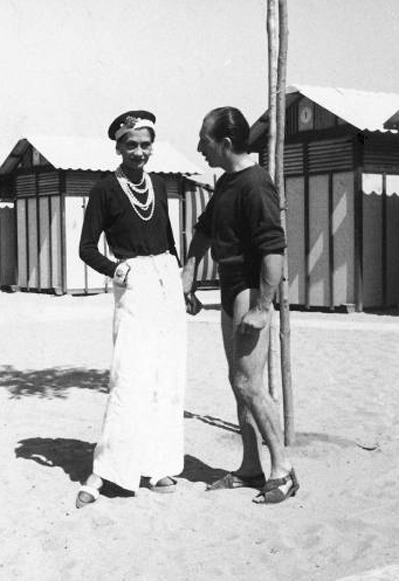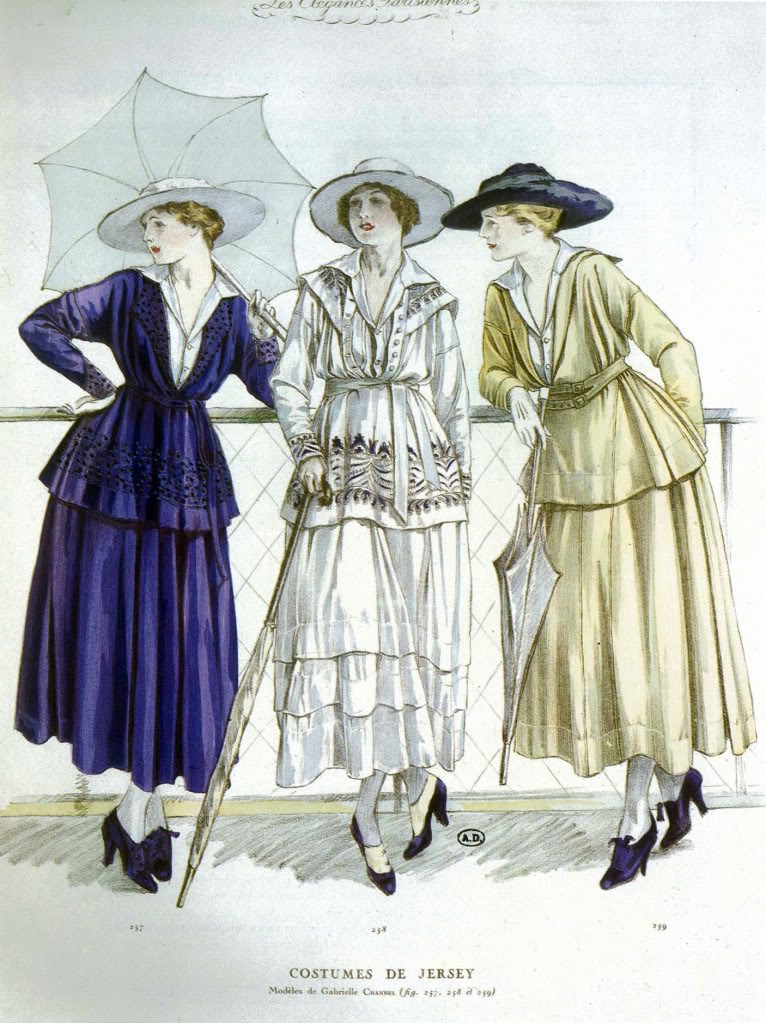Coco Chanel’s Regrets
July 28, 2017

THE fashion designer Coco Chanel (1883-1971) played a powerful role in changing women’s fashions. One of her most significant influences involved pants.
It is hard today, when most women wear pants all the time, to conceive of how revolutionary was this change, which allegedly began when she started wearing sailors trousers on the beach in the French Riviera. Up until the 1930s, women in the West universally wore dresses and skirts. If you look at photos of street scenes in those years, there are no women — none — in pants.
Interestingly, Chanel later expressed regrets:
Although during the war women often had to wear trousers when working in traditionally male jobs, Chanel played a huge part in accelerating their popularity as a fashion item. While at the society beach resort of Deauville she chose to wear sailor’s pants instead of a swimming costume to avoid exposing herself, and the style spread quickly as her legions of followers emulated her. In the end, the designer regretted how her careless decision affected the course of fashion history. Aged 86 she said: “I came up with them by modesty. From this usage to it becoming a fashion, having 70% of women wearing trousers at evening dinner is quite sad.” (Source)
The wearing of pants is almost universally considered today to be a form of liberation. But others, rarely quoted, maintained back then that it was a sign of a growing inferiority complex.
The skirt or dress was an emblem of a woman’s inherent dignity. Like a priest’s vestments, it had an almost ceremonial quality. Here are some early dresses designed by Chanel, who later popularized the more austere black dress:

The wearing of pants signified a desire to be like men. It represented an envy of men — and envy is always based in a fundamental misunderstanding of the envied.
Guiseppe Cardinal Siri wrote in 1960 on the effects on the psychology of women in a pastoral letter:
Masculine clothing changes the psychology of women
In truth, the motive that impels women to wear the clothing of men is not always to imitate him, but rather to compete with the man who is considered stronger, less encumbered and more independent. This motivation shows clearly that masculine dress is a visible support to bring about a mental attitude of being ‘like a man.’ Further, since the existence of man, the clothing a person wears conditions, determines and modifies the gestures, attitudes and conduct of a person. Thus, just by its wearing, the clothing comes to impose a particular state of spirit in the person.
Permit us to add that a woman who always wears the clothing of men more or less indicates that she is reacting to her femininity as if it were inferior, when in fact it is only different. The perversion of her psychology is clearly evident.
These reasons, added to many others, are sufficient to warn us of how mistaken is the thinking of women who wear men’s dress.
Today it seems that women will always wear pants. But it is inevitable that they rediscover and take pride in the distinctiveness of femininity.
— Comments —
Lisa writes:
I don’t know if you looked at that first photo of Coco Chanel and only saw her initially as I did. But I looked again and saw the man standing next to her and was shocked (but never surprised anymore) by what HE was wearing! Those Frenchmen are very immodest!
Laura writes:
Those itty-bitty suits are unseemly and unflattering. I don’t think they are meant to appeal to women.

